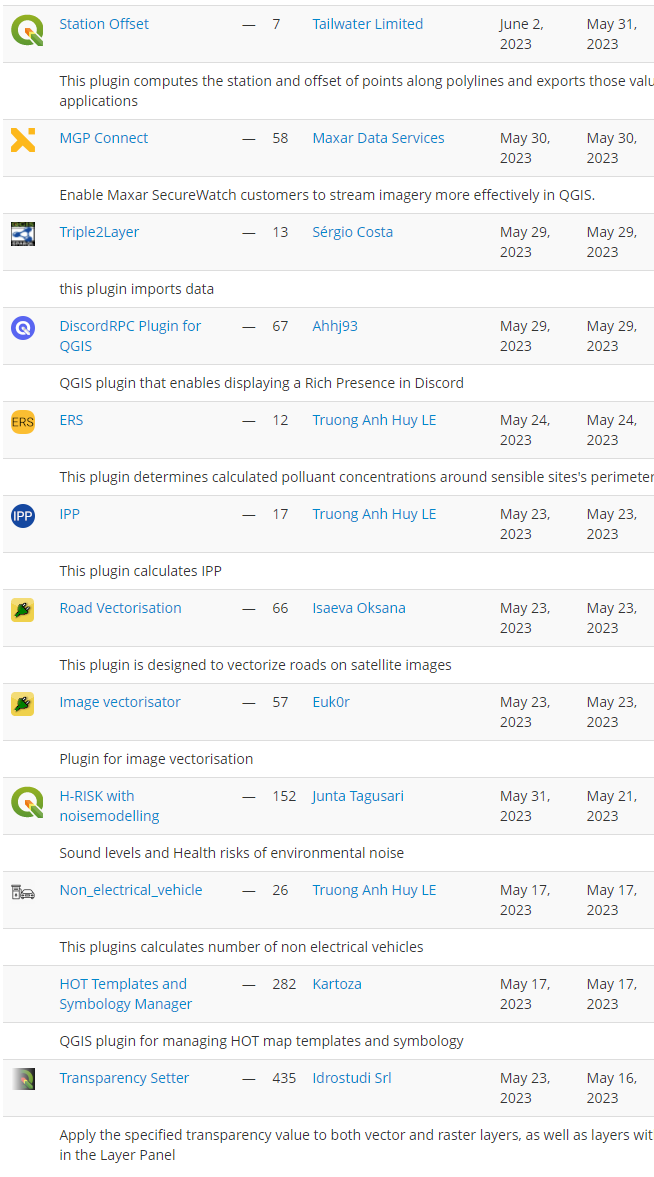- 8 Posts
- 7 Comments
Yeah, it surprised me how short the tiller was. I constructed it just as the design described it, but this was one of Dudley Dix’s early designs, I believe. It’s the Argie 15.
I did make one change early in the life of this boat: the tiller definitely swivels up and down now!

 3·1 year ago
3·1 year agoI’m realizing my knowledge of how to do this is really dated. I got into QGIS plugins 15 years ago, and at that time there were some links on the QGIS website to plugin tutorials across the web. I’m not finding that now.
I do know I started with the QGIS documentation, and it looks like these days they point you to the PyQGIS Developer Cookbook as the starting point. It is also probably worth wandering around the dedicated QGIS plugin website. I strongly suspect you’ve already done both of these, though.
I do remember that the learning curve was steeper than I expected. If you go the route of a Python plugin like I did, before it is said and done, you’ll likely need to be comfortable with at least some Qt, PyQt, the QGIS Python API, and details about the tools to manipulate the data you’re working with. In my case that was PostGIS and pyscopg2, the Python PostgreSQL library.
I’d strongly recommend you start very simple. Manipulate a few things in the Python console. Work your way up to a bare bones plugin that provides a single menu option. Then start building up from there.
I’ll be very curious to see if others have links to tutorials they’ve tried recently. There’s the usual route of checking Google and YouTube, but I cannot tell you what is reliable there and what isn’t.

 1·1 year ago
1·1 year agoApologies for the late response. I hadn’t posted any rules yet, but I’m certainly open to suggestions.
I’d like to lean in the direction of less than more on the rules and then deal with problems as they come up.
I’ll modify the description to include some brief rules, and then we probably need to bring it up for discussion at some point. Provided we start to see some traffic.
[Full disclosure: I’m a director at a large software company (not ESRI!), and I’m not entirely sure our own HR department includes pay range in all their job postings – although that may be changing right now with various rule changes at the state level in the US.]

 2·1 year ago
2·1 year agoEdgar Rice Burroughs’ John Carter books are public domain. They’ve got those on Project Gutenberg, but they may be too much “stock characters” for you.
Would some of the Lewis Carroll stuff scratch the “science fiction” itch?
It’s a bit of a stretch, but Mark Twain’s Connecticut Yankee in King Arthur’s Court at least has the character development. And, strictly speaking, it is time travel. ;)
Finally, if quasi-fantasy and mythopeia do anything for you, there are things like George Macdonald’s Phantastes and G. K. Chesterton’s The Man Who Was Thursday. Both those authors were influences on C. S. Lewis. But we’re really straying away from anything that’s strictly science fiction there.
This fascinates me, but I’ve got stupid questions:
- Is it just the friction between the tires and land that plays the role of keel or centerboard in this case?
- How close to the wind can you go?
RedHat here in the late 90s, back when you could still find yourself writing a “modeline.”
Then Debian in the early 00s when apt was still a major discriminator. Finally, Ubuntu around 2008 just so I was running the same thing I was recommending to family members for ease of use. (At the time, Ubuntu sported the same ease of installation and hardware detection I’d found with Knoppix.)
Now on Xubuntu, but seriously eyeing a return to Debian.






Yep! It took about 6-9 months the summer of 2021. It’s a rough ride, and I’m not always thrilled with the performance. If it breaks, though, I get to keep all the pieces, and sometimes I even know how to put them back together!
The design was chosen because it was about as big as I could get and still fit it on a trailer in the garage.